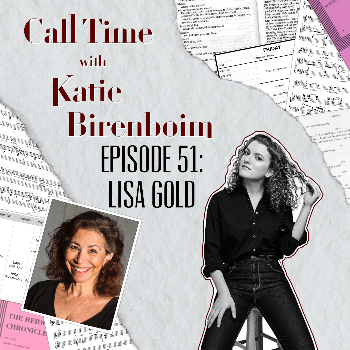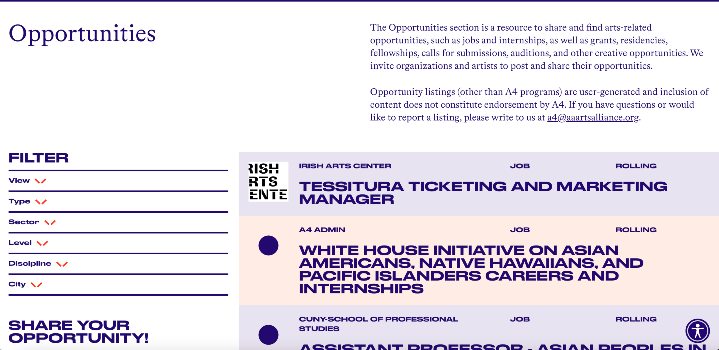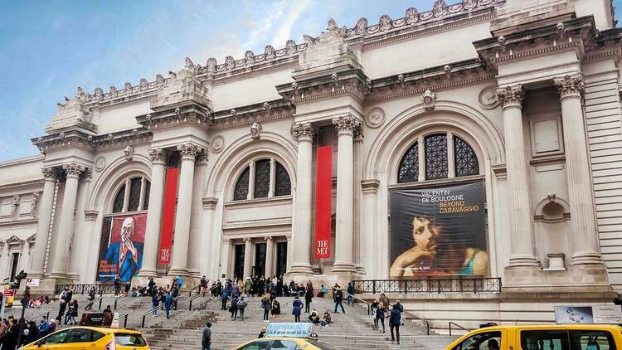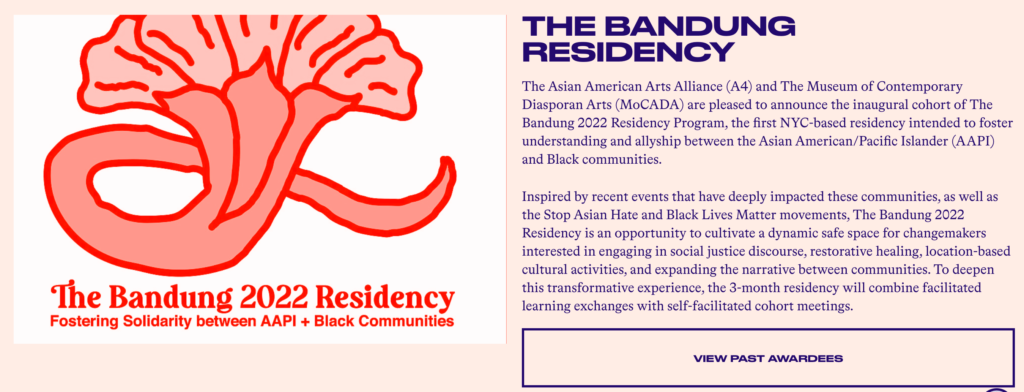
After a brief hiatus, I was so happy to get back to the interview format with my guest this week on the podcast, Lisa Gold, Executive Director of the Asian American Arts Alliance, otherwise known as “A4.” I became eager to interview Lisa when she spoke in my “Audience Development and Community Engagement” class at NYU, taught by the legendary Donna Walker-Kuhne (and a previous guest of the pod!). Lisa spoke about the challenges of running an advocacy organization for Asian American artists during the Trump administration and, then, during the pandemic when anti-Asian hate, and in some cases violence, was at a high in this country, especially in New York. She spoke about the challenges A4 faces under any circumstances and in any political climate: the limited funds, the red tape, and the pressures of the “model minority” myth. I knew that I had to hear more, and I knew that if I was eager for the full story, surely my listeners and readers might be as well.
I was intrigued by, and wanted to hear more about, the mission of A4 itself, because it’s somewhat unique within the New York City arts scene. According to the website, A4 seeks to “ensure greater representation, equity, and opportunities for Asian American artists and cultural organizations through resource sharing, promotion, and community building.” What I thought was so interesting about A4, and its mission, is that it’s an advocacy organization — that happens to advocate for artists from the AAPI community, and artistic organizations from the AAPI community, specifically. In other words, A4 produces no work or programming of its own: the org solely acts as a resource to Asian American artists. And this term, “resource,” can mean many different things, as Lisa and I discussed. Of course, sometimes — or most of the time — that means money (what do ALL artists need?), so that can translate to, as Lisa explained, helping connect Asian American artists with relevant grants, or even jobs. Lisa and I discussed how the A4 site is one of the only arts organization sites, beyond, say, Playbill, with a portal for open and relevant job opportunities. Similarly, A4 hosts grant-writing workshops, and other professional development events of that nature, to ensure that even if A4 itself cannot give artists their due, it’s going to do its darndest to get them funding from somewhere else.

That’s the biggest takeaway I had from my discussion about A4 with Lisa: that, distilled to a single concept, A4 is about community, and specifically giving Asian American artists a sense of home, belonging, and understanding so that they can make the best possible artistic work. In discussing A4’s emphasis on professional development, I asked Lisa if she had a mentor as she entered the arts management scene — she’s had a storied career beyond A4, at the Hirshhorn Museum and Sculpture Garden, the Drawing Center, Socrates Sculpture Park, and more. She told me she hadn’t: that when she entered the business she didn’t know “a single person who looked like [her].” Obviously, this helps to explain A4’s mission and Lisa’s stellar steering of the ship: she wants to give early-career, Asian American artists and arts organizations what she didn’t have.
And we discussed how this mission — of community, of belonging, of representation — is perhaps even more relevant for the Asian American community and beyond today than it was when A4 was found in 1983, in the wake of the Civil Rights movement and the lifting of (racist) national immigration quotas. As Lisa reminded us, Asian Americans represent one of the fastest growing populations in New York City. Chinese immigrants represent the second largest population of foreign-born immigrants, and the AAPI community makes up close to 15% of the total NYC population. Yet, per Lisa’s words, you wouldn’t know it if you opened up, say, the typical Arts & Leisure section of The NY Times. For this reason, A4 is launching a weekly online magazine, featuring the work and criticism of Asian American writers and artists, entitled The Amp. It’s also why the organization has a great deal more to do with politics, and city government, than the average arts org.
Indeed, that was another reason I was drawn to Lisa. When she spoke at NYU, she said that a huge part of her job is literally “speaking” at those kinds of events — to spread the word any and everywhere in attempting to advocate for her community. When we recorded the episode, she said she was speaking at a City Council meeting just the next day. To me, it was a reminder not only of the ways that the Asian American community can be misrepresented, or excised entirely, from the mainstream story (especially in light of anti-Asian hate that spiked during the pandemic, discussed above), but also of the ways that arts organizations, especially small ones, are dependent on, and intertwined with, city politics. Argue all you want about whether the donations of private foundations or individuals are more valuable than the assistance of the government, but it’s nevertheless clear that in New York, the financial health of your organization is linked to the city. And it’s not just about funding! It’s about awareness, press, knowledge, and relationships.
Another one of my NYU classes this semester focuses specifically on New York City public policy and planning — through the Wagner School — and it’s really hit that point home for me. It’s all well and good to be a CIG in NYC (the city owns “cultural institutions group” buildings like the Met, New York City Ballet, or the Brooklyn Academy of Music, organizations who therefore receive significant, and assured, capital and funding every year), but if you are a small organization like A4, or your other favorite arts org like New York Theatre Workshop or Dance Theatre of Harlem for example, the ins and outs of city bureaucracy, and the attention of a Mayoral administration or City Council, can make or break you.

And that’s not to equate “smallness” with inadequacy or fear. In fact, stepping away from my conversation with Lisa, I was even more assured of some of the advantages of small arts organizations: they can be nimble enough to adapt with the times — “responsive,” as Lisa called it. For a larger organization that programs big musicals or dance pieces, the switch to Zoom events and virtual opportunities could be the kiss of death, but for an organization like A4, it could represent a means of transformation and further creativity: as the org did with The Amp (discussed above) and with the “Badung Residency,” a co-pro with The Museum of Contemporary Diasporan Arts, the first of its kind to promote “understanding and allyship between the Asian American/Pacific Islander…and Black communities,” that specifically grew out of the pandemic, the rise in anti-Asian hate, and the Black Lives Matter movement.

Listen to hear more about A4 and its mission, Lisa and her career, the importance of listening, being the “black sheep” of the family, project management, public art, the best non-profit galleries in D.C. and New York, and more.


A well written and informative article,as always!